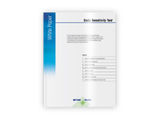| Brain: Parietal lobe
|
|
|
| Principal fissures and lobes of the cerebrum viewed laterally. (Parietal Lobe is shown in yellow)
|
|
|
| Lateral surface of left cerebral hemisphere, viewed from the side. (Parietal Lobe is in upper right.)
|
| Latin
| lobus parietalis
|
| Gray's
| subject #189 822
|
| Part of
| Cerebrum
|
| Artery
| Anterior cerebral
Middle cerebral
|
| Vein
| Superior sagittal sinus
|
| NeuroNames
| hier-77
|
| MeSH
| Parietal+Lobe
|
The parietal lobe is a lobe in the brain. It is positioned above (superior to) the occipital lobe and behind (posterior to) the frontal lobe.
The parietal lobe integrates sensory information from different modalities, particularly determining spatial sense and navigation. For example, it comprises somatosensory cortex and the dorsal stream of the visual system. This enables regions of the parietal cortex to map objects perceived visually into body coordinate positions.
Additional recommended knowledge
Anatomy
The parietal lobe is defined by four anatomical boundaries: the central sulcus separates the parietal lobe from the frontal lobe; the parieto-occipital sulcus separates the parietal and occipital lobe; the lateral sulcus (sylvian fissure) is the most lateral boundary separating it from the temporal lobe; and the medial longitudinal fissure divides the two hemispheres.
Immediately posterior to the central sulcus, and the most anterior part of the parietal lobe, is the postcentral gyrus (Brodmann area 3), the primary somatosensory cortical area. Dividing this and the posterior parietal cortex is the postcentral sulcus.
The posterior parietal cortex can be subdivided into the superior parietal lobule (Brodmann areas 5 + 7) and the inferior parietal lobule (39 + 40), separated by the intraparietal sulcus (IP). The intraparietal sulcus and adjacent gyri are essential in guidance of limb and eye movement, and based on cytoarchitectural and functional differences is further divided into medial (MIP), lateral (LIP), ventral (VIP), and anterior (AIP) areas.
Function
The parietal lobe plays important roles in integrating sensory information from various parts of the body, knowledge of numbers and their relations[1], and in the manipulation of objects. Portions of the parietal lobe are involved with visuospatial processing. Much less is known about this lobe than the other three in the cerebrum.
Various studies in the 1990s found that different regions of the parietal cortex in Macaques represent different parts of space.
- The lateral intraparietal (LIP) contains a 2-dimensional topographic map of retinotopically-coded space representing the saliency of spatial locations. It can be used by the oculomotor system for targeting eye movements, when appropriate.
- The ventral intraparietal (VIP) area receives input from a number of senses (visual, somatosensory, auditory, and vestibular[2]). Neurons with tactile receptive fields represented space in a head-centered reference frame[2]. The cells with visual receptive fields also fire with head-centered reference frames[3] but possibly also with eye-centered coordinates[2]
- The medial intraparietal (MIP) area neurons encode the location of a reach target in eye-centered coordinates.[4]
- The anterior intraparietal (AIP) area contains neurons responsive to shape, size, and orientation of objects to be grasped[5] as well as for manipulation of hands themselves, both to viewed[5] and remembered stimuli. [6]
Pathology
Gerstmann's syndrome is associated with lesion to the dominant (usually left) parietal lobe. Balint's syndrome is associated with bilateral lesions. The syndrome of hemispatial neglect is usually associated with large deficits of attention of the non-dominant hemisphere.
Additional images
References
- ^ Blakemore & Frith (2005). The Learning Brain. Blackwell Publishing. ISBN 1-4051-2401-6
- ^ a b c Avillac M, Deneve S, Olivier E, Pouget A, Duhamel JR. (2005) Reference frames for representing visual and tactile locations in parietal cortex. Nat Neurosci. 8(7):941-9.
- ^ Zhang T, Heuer HW, Britten KH. (2004) Parietal area VIP neuronal responses to heading stimuli are encoded in head-centered coordinates. Neuron 42(6):993-1001.
- ^ Pesaran B, Nelson MJ, Andersen RA. (2006) Dorsal premotor neurons encode the relative position of the hand, eye, and goal during reach planning. Neuron 51(1):125-34.
- ^ a b Murata A, Gallese V, Luppino G, Kaseda M, Sakata H. (2000) Selectivity for the shape, size, and orientation of objects for grasping in neurons of monkey parietal area AIP. J Neurophysiol 83(5):2580. PMID 10805659
- ^ Murata A, Gallese V, Kaseda M, Sakata H. (1996) Parietal neurons related to memory-guided hand manipulation. J Neurophysiol 75(5):2180-6. PMID 8734616
See also
Lobes of the brain
| Brain: telencephalon (cerebrum, cerebral cortex, cerebral hemispheres) |
|---|
| Primary sulci/fissures | Medial longitudinal, Lateral, Central, Parietoöccipital, Calcarine, Cingulate, Callosal Collateral fissure |
|---|
| Frontal lobe | Precentral gyrus (Primary motor cortex, 4), Precentral sulcus, Superior frontal gyrus/Frontal eye fields (6, 8, 9), Middle frontal gyrus (46), Inferior frontal gyrus (44-Pars opercularis, 45-Pars triangularis), Orbitofrontal cortex (10, 11, 12, 47) |
|---|
| Parietal lobe | Somatosensory cortex (Primary (1, 2, 3, 43), Secondary (5)), Precuneus (7m), Parietal lobules (Arcuate fasciculus/Superior (7l), Inferior (40)), Angular gyrus (39), Intraparietal sulcus, Marginal sulcus |
|---|
| Occipital lobe | Primary visual cortex (17), Cuneus, Lingual gyrus, 18, 19 - Lateral occipital sulcus |
|---|
| Temporal lobe | Primary auditory cortex (41, 42), Superior temporal gyrus (38, 22), Middle temporal gyrus (21), Inferior temporal gyrus (20), Fusiform gyrus (37) Medial temporal lobe (Amygdala, Hippocampus, Parahippocampal gyrus (27, 28, 34, 35, 36) |
|---|
| Cingulate cortex/gyrus | Subgenual area (25), anterior cingulate (24, 32, 33), Posterior cingulate (23, 31), Retrosplenial cortex (26, 29, 30), Supracallosal gyrus |
|---|
| white matter tracts | Corpus callosum (Splenium, Genu, Rostrum, Tapetum), Septum pellucidum, Internal capsule, Corona radiata, External capsule, Olfactory tract, Fornix (Commissure of fornix), Anterior commissure, Posterior commissure Terminal stria Superior and Inferior longitudinal fasciculus, uncinate fasciculus, cingulum, Inferior occipitofrontal fasciculus |
|---|
| Basal ganglia | Striatum (Putamen,Caudate nucleus, Nucleus accumbens), Globus pallidus, Claustrum, Subthalamic nucleus, Substantia nigra |
|---|
| Other | Insular cortex Olfactory bulb, Anterior olfactory nucleus Septal nuclei Basal optic nucleus of Meynert |
|---|
| Some categorizations are approximations, and some Brodmann areas span gyri. |
|







